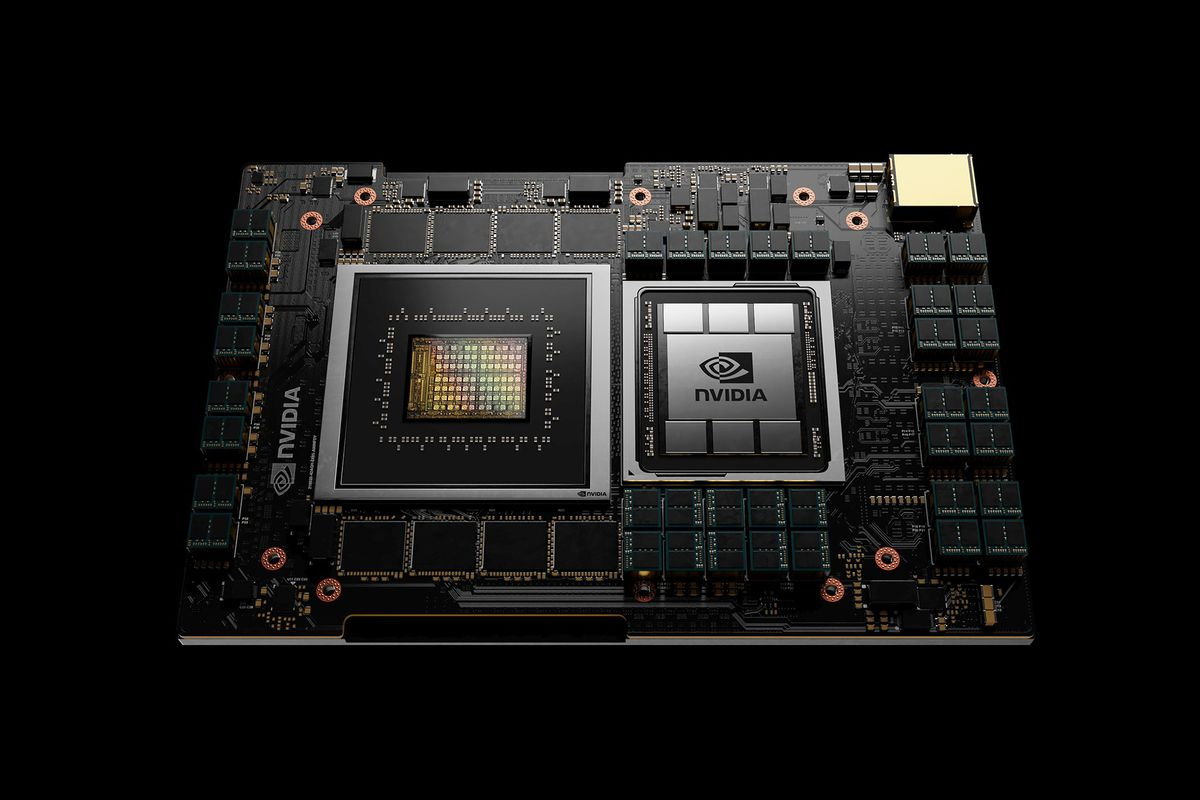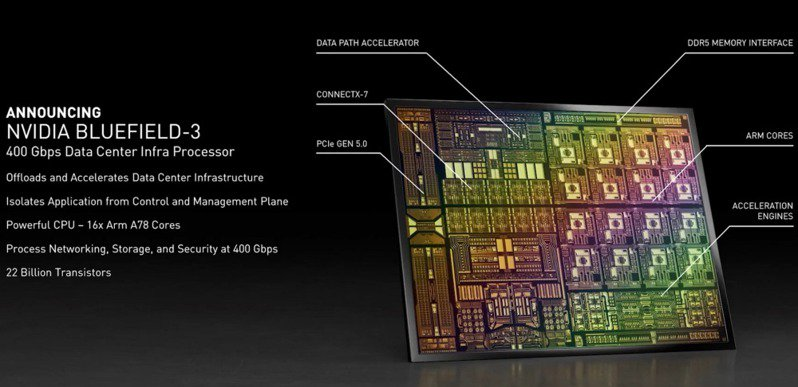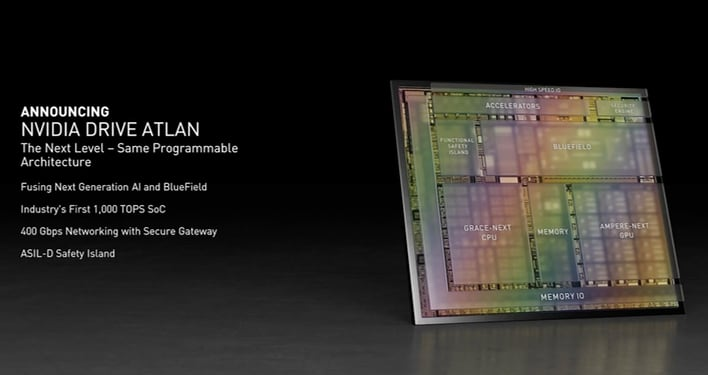Veröffentlicht :13.04.2021 09:06:15
Klicken Sie auf Zählen:2103
News on April 13 Early this morning, NVIDIAGTC, the annual event that affects artificial intelligence and high-performance computing technology, arrived as scheduled. This is the second time the NVIDIAGTC conference was held online since last year.

Last year, NVIDIA released A100GPU and a series of servers, clusters, and supercomputers, which caused a shock in the AI field. Today, NVIDIA CEO Huang Renxun returns with a series of new software and hardware products.
Six months after announcing the $40 billion acquisition of Arm, NVIDIA released three new Arm-based processors, including the world's first CPU NVIDIAGrace designed for TB-level accelerated computing, the new BlueField-3DPU, and the industry's first 1000TOPS computing power SoC for self-driving cars.
After NVIDIA announced three new processors that include server CPUs, so far, US stocks NVIDIA has risen 5.62%, while Intel has fallen by more than 4%, and AMD has fallen by more than 5%.
1. NVIDIAGrace
At the press conference, Huang Renxun announced the first blockbuster new product, which is a CPU specially designed for large-scale artificial intelligence and high-performance computing applications-NVIDIAGrace.
It is understood that the vast majority of data centers will continue to use existing CPUs, and Grace will be mainly used in the segment of the computing field, and it is expected to be available in 2023. Since it is difficult to put ultra-large-scale models into the GPU memory completely, if they are stored in the system memory, the access speed will be greatly limited. This CPU is mainly introduced to solve this bottleneck.

NVIDIA named this CPU after the pioneer computer scientist GraceHopper who invented the world's first compiler and is known as the "first lady of computer software engineering". There are three specific innovations:
(1) Built-in next-generation ArmNeoverse kernel, each CPU can run more than 300 instances per unit time in the SPECrate2017_int_base benchmark test;
(2) Using the fourth generation of NVIDIA NVLink, the connection speed from CPU to GPU exceeds 900GB/s, which is 14 times the bandwidth of the current server; the speed from CPU to CPU exceeds 600GB/s.
(3) With the highest memory bandwidth, the new memory LPDDR5x technology adopted, the bandwidth is twice that of LPDDR4, the energy efficiency is increased by 10 times, and it can provide more computing power.
Two powerful AI supercomputers will be launched next year, both of which will use NVIDIA Grace, which is said to be closely integrated with NVIDIA GPU, and the performance will be 10 times higher than the current most advanced NVIDIA DGX system (running on x86 CPU).
Among the two AI supercomputers, the Swiss National Computing Center (CSCS) is building a system with a computing power of up to 20 Exaflops, and the Los Alamos National Laboratory in the United States (Los Alamos NaTIonal Laboratory) will also equip its researchers with new AI supercomputers.
2. Bluefield-3DPU
Huang Renxun believes that the data processing unit (DPU) responsible for transmitting and processing data in the data center is forming the "three pillars of future computing" together with the CPU and GPU.
NVIDIA’s new BlueField-3DPU contains 22 billion transistors, 16 ArmA78CPU cores, 18MIOPs flexible block storage, 4 times the encryption speed of the previous generation, and is fully backward compatible with BlueField-2.

The new generation BlueField-3DPU is expected to release samples in the first quarter of 2022. The fourth generation BlueFieldDPU has a computing power of 1000 TOPS and a network rate of 800 Gbps.
BlueField-2 can replace the workload equivalent to 30 CPU cores, while BlueField-3 achieves a 10 times acceleration in computing performance, can replace 300 CPU cores, and protect, offload and accelerate network traffic at a rate of 400Gbps . This processor is also the first DPU to support the fifth-generation PCIe bus and provide data center time synchronization acceleration.
BlueField-3 provides developers with a complete and open software platform through the NVIDIADOCA (integrated data center on chip architecture) software development kit to develop software-defined and hardware-accelerated network, storage, security and management applications on BlueFieldDPU. DOCA has been released today and is available for download.
3. NVIDIADRIVEAtlan
NVIDIADRIVEAtlan is a new generation of AI self-driving car processor, the computing power will reach 1000TOPS, about 4 times that of the previous generation Orin processor, surpassing the intelligent computing power of most existing driverless taxis.

This is the first time that the DRIVE platform integrates DPU and brings a data center-level network to autonomous vehicles through the Arm core, and is committed to applying it to 2025 models.
The SoC uses the next-generation GPU architecture, new ArmCPU cores, new deep learning and computer vision accelerators, and built-in BlueFieldDPU for advanced network, storage and security services, with a network speed of up to 400Gbps.
Huang Renxun praised: “Atlan integrates all the technologies of NVIDIA in the fields of AI, automotive, robotics, security and BlueField secure data center, which can be called a technological miracle.”
"We release exciting new products every year. Three types of chips, leaping year by year, one architecture." Huang Renxun said that the data center roadmap includes three types of chips: CPU, GPU and DPU, and Grace and BlueField are the essential keys. component. Each chip architecture has gone through a two-year polishing cycle (changes may occur during the cycle), one year focusing on the x86 platform, and another year focusing on the Arm platform.
In addition, NVIDIA also announced partnerships with Arm-based CPU platforms such as Amazon AWS, AmpereCompuTIng, MediaTek and Marvell.
In terms of software, a series of latest developments such as the super-large-scale language model training and inference question-and-answer engine Megatron, the real-time dialogue AI platform Jarvis, the AI network security framework Morpheus, the Omniverse Enterprise Edition, and the GPU-accelerated quantum circuit simulation framework CuQuantum were first announced.